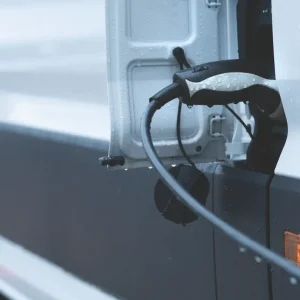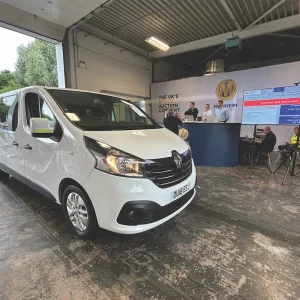The London Electric Vehicle Company (LEVC – formerly the London Taxi Company) is to start producing vans in the fourth quarter of 2019 based on the platform of the hybrid electric taxi it launched in January this year.
LEVC’s owner, Chinese manufacturer Geely, invested £325m three years ago in a new factory in Coventry to produce the aluminium vehicles, which are powered by the firm’s eCity technology comprising an electric drivetrain with a back-up 1.5-litre petrol generator.
Geely said it had invested in LEVC because it believes transport patterns are changing, with a decline in personal vehicle ownership corresponding with a growth in services, leading to more demand for vans and taxis.
LEVC said extensive testing of its eCity platform for its taxi had provided the foundation for the introduction of an LCV and it believes there are commercial benefits in meeting governments’ clean-air targets ahead of time. The UK government has called for the manufacture of conventional petrol and diesel vehicles to be phased out by 2040.
In contrast to other manufacturers of ultra-low emission vehicles (ULEVs), LEVC claimed its van will not focus on last-mile deliveries but will provide the link between out-of-town distribution centres and inner-city destinations.
It defined its target segment as vans that travel 100 miles a day, fulfilling assignments that it claimed are currently covered by 1.0t medium-sized diesel vans, such as the UK’s bestseller, the Ford Transit Custom, with load volumes of about 5.0m3.
Product manager Antonios Giampanis said: “We are not just last mile – that’s the whole point of the range-extender.”
He said operators would load up the vans outside urban conurbations, then travel towards the city in “save mode” before switching to electricity for the last stage of the journey.
“We are at the start of our journey for light commercial vehicles,” said Chris Gubbey, LEVC’s chief executive.
He said the Coventry factory would be turning out 10,000 vehicles annually by 2020, split equally between vans and taxis, and predicted the number would rise to 20,000 within two years – half of which will be exported.
According to Gubbey, the manufacturer sources a third of the parts for the vehicles in the UK, a third from the European Union and a third from the rest of the world. The engine is made in China and the battery in Korea.
LEVC, which employs 850 people, including 200 engineers, has not revealed the finer details about the van but its TX1 taxi has an electric range of 80 miles, which extends to 400 when the petrol generator is employed.
The depleted battery can be recharged to almost full in 20 minutes via a rapid-charger, in two hours with a fast-charger, and in up to 10 hours with a standard plug.
The van will escape the fees levied on diesel vehicles for entering low-emission zones – such as the one already established in London – as well as offering reduced running costs.
LEVC said: “We are aiming to deliver a vehicle that, for its size, will deliver a competitive total cost of ownership.”
Gubbey claimed the van would come with standard safety features such as automatic emergency braking and cited the motor insurers’ research centre Thatcham’s claim that this can reduce insurance costs through cutting accident rates by 38%. Lane departure warning and traffic sign reading, for detecting speed limits, are also set to be included as are “all the airbags”, according to Gubbey.
Giampanis said the firm’s experience in the taxi market, where drivers spend all day in their cabs, had taught it how to create a relaxing, user-friendly interior and he claimed this, combined with the emphasis on safety, would make the vans’ owners happy and productive.
“The driver must be comfortable,” he said, “and we have [this] experience from taxis.”
Another example he gave of features inherited from the taxi are in the door hinges, which he claimed have been tested far more rigorously than would be usual for an LCV.
Giampanis claimed the van’s lightweight aluminium body would compensate for the battery weight without compromising payload and that its load-carrying capacity would be comparable to that of a diesel van. He added that aluminium is resistant to corrosion and would thus result in stronger residual values at the end of first ownership.
He said the van would initially be offered with one wheelbase and a height less than 2.0m, enabling it to safely get under car park barriers. The load bay will be accessed through two barn doors and a side sliding door and the vehicle will boast “the best turning circle in the market,” Giampanis claimed.
LEVC will target its vans at large fleets. It declined to say which companies it is negotiating with at this stage but customers are likely to include postal services and utility suppliers.
“We wouldn’t be against bidding for business with local councils,” Gubbey added.
The manufacturer acknowledges that its van will take its place in fleets alongside other powertrains to suit a range of applications.
“You won’t replace your whole fleet with our product,” Gubbey admitted.
Gubbey added that LEVC had not named its vehicle yet but that when it did the moniker would incorporate the tag ‘eCity’.





